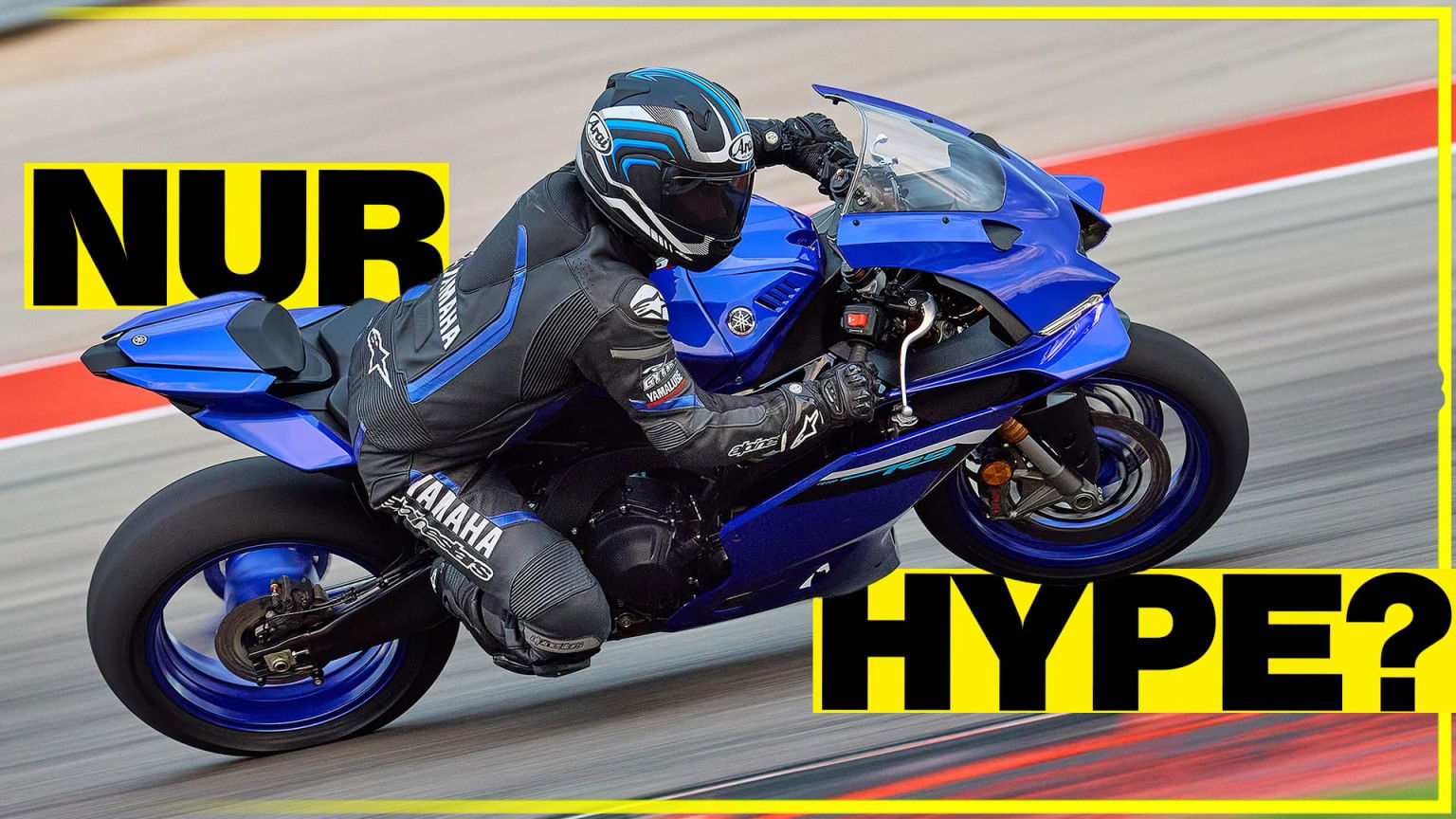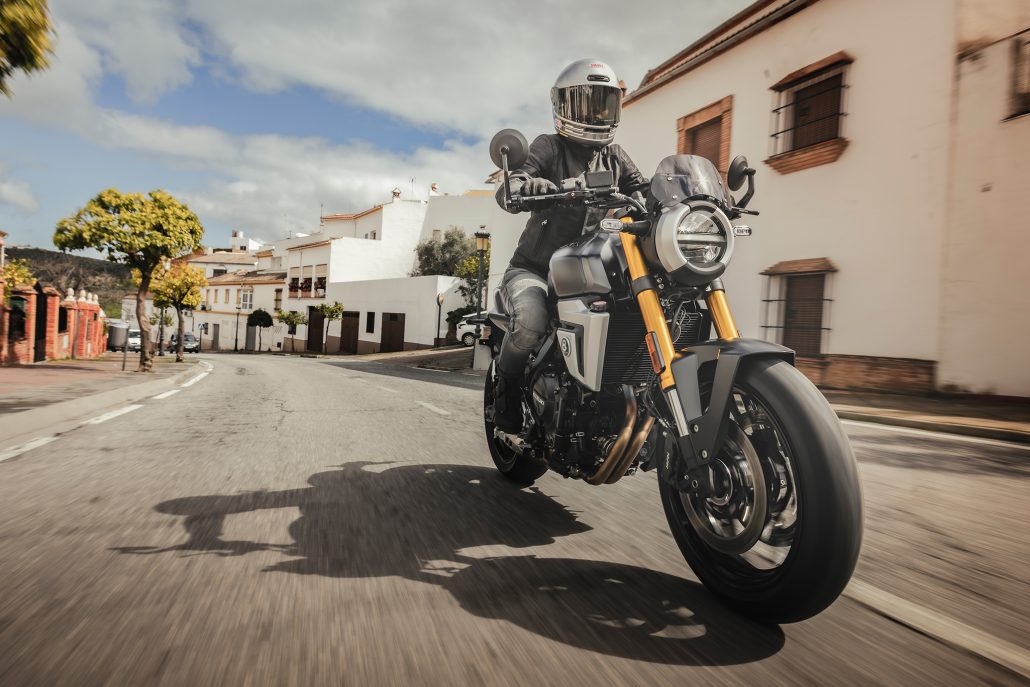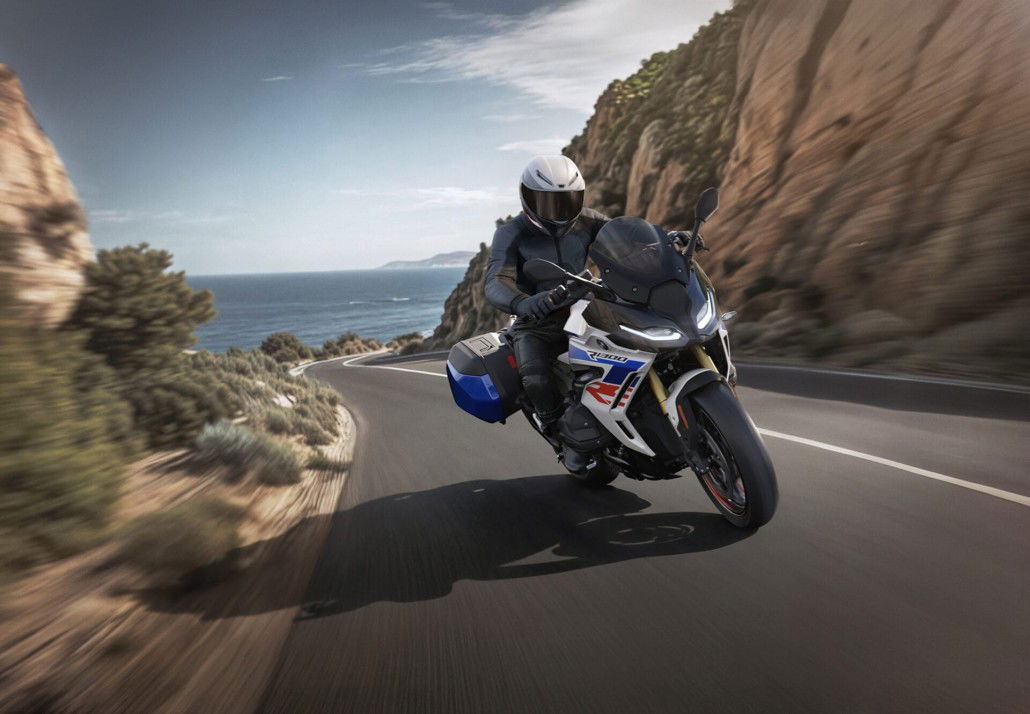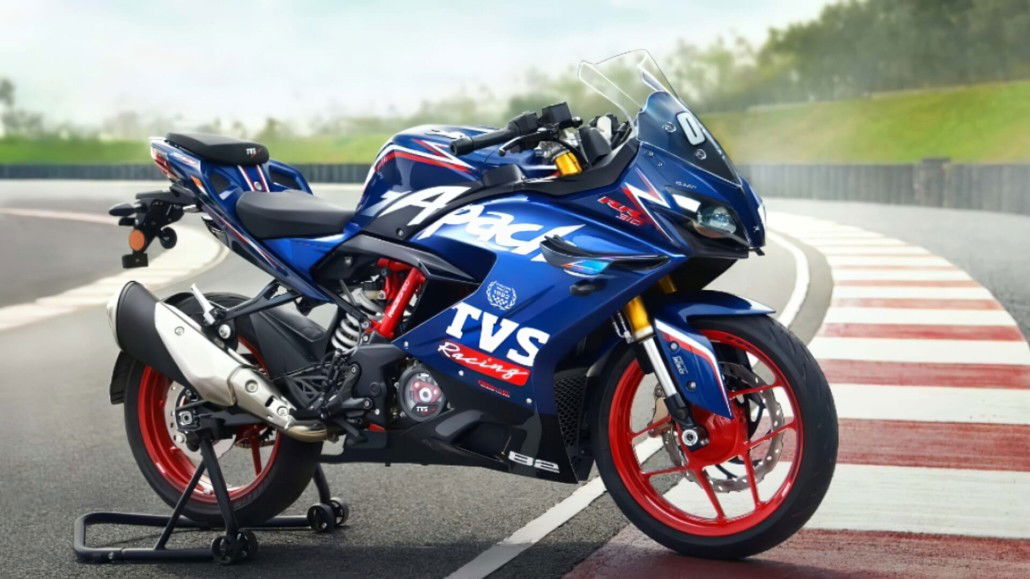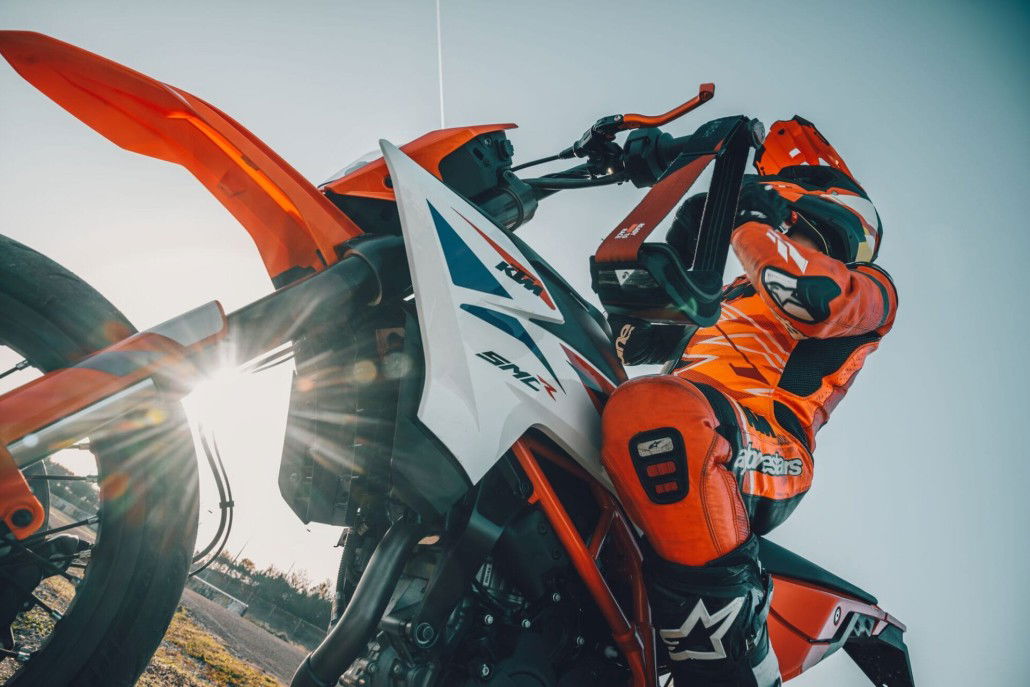Modern design inspired by MotoGP
The R9 incorporates numerous design elements that are familiar from the MotoGP sector and characterize the striking appearance of the R series. The horizontally emphasized lines, which were already introduced with the R1 in 2015, are further developed on the R9 and convey a flowing dynamic. The integrated winglets below the headlights not only provide an aerodynamic advantage, but also reinforce the sporty appearance.
The characteristic “M”-shaped air intake is emblazoned in the center of the front, flanked by LED daytime running lights. A single lens headlight and the central front spoiler complete the picture and contribute to the aggressive look.
Powerful three-cylinder: 890 cm³ CP3 engine
At the heart of the Yamaha R9 is the proven 890 cc CP3 DOHC three-cylinder engine with liquid cooling and a bore of 78 mm and a stroke of 62 mm. With a compression ratio of 11.5:1, the engine develops a torque of 93 Nm at 7,000 rpm and a peak output of 119 hp (87 kW) at 10,000 rpm. The characteristic sound of the three-cylinder engine, which is typical of the CP3 series, is retained.
The final drive ratio, ignition timing and injection mapping are specially tuned for a sporty riding style on the road and racetrack. The electronic Yamaha Chip Controlled-Throttle (YCC-T) is designed to enable precise power delivery.
Deltabox frame and optimized handling
For the R9, Yamaha relies on a newly developed Deltabox frame made of lightweight gravity-cast aluminum, which weighs just 9.7 kg. This results in a fully fueled total weight of 195 kg (430 lbs). Compared to other models in the CP3 range, the stiffness of the frame has been improved in all three directions (torsional, longitudinal and lateral), which should provide more precise feedback and a sporty riding experience.
The narrow design of the frame and frame rear supports the agile handling, which is supported by the fully adjustable 43 mm KYB telescopic fork of the new generation. This enables separate adjustment of the rebound and compression damping. A special bottom valve is also designed to optimize the pressure in the cylinder and thus improve damping performance.
Next generation aerodynamics
When developing the R9, Yamaha relied on extensive wind tunnel tests to further optimize the aerodynamics. As a result, drag has been reduced compared to the R6, even though the R9 has a larger frontal area and a larger radiator. The aerodynamic winglets and the front spoiler reduce lift at the front end by 6 to 7 % on straight stretches and by up to 10 % when cornering. This should lead to a more stable driving style at high speeds.
High-quality Brembo brake system and sporty tires
The racing-derived Brembo Stylema brake system with 320 mm brake discs on the front wheel ensures precise deceleration. The radially mounted Brembo master cylinder and the stainless steel mesh brake hoses are designed to ensure a controlled braking feel.
The R9 is fitted with Bridgestone Battlax Hypersport RS11 tires, which are designed for high performance on the racetrack and on public roads. They are particularly impressive in terms of grip and feedback.
Electronics at R1 level: IMU and YRC modes
The R9 adopts the electronics platform of the R1, including a six-axis IMU (Inertial Measurement Unit). This records movement data in real time and sends it to the ECU in order to adapt the behavior of the electronic assistance systems such as Traction Control (TCS), Slide Control (SCS), Brake Control (BC) and Engine Brake Management (EBM).
The Yamaha Ride Control (YRC) system allows riders to choose between various preset riding modes (“SPORT”, “STREET”, “RAIN”) and also make individual settings for different riding conditions. In Track mode, the rear ABS can even be switched off to provide more control on the racetrack.
Comfort and ergonomics: Adapted riding position and practical features
Despite its sporty orientation, the R9 offers an optimized riding position with clip-on handlebars mounted below the triple clamp. The seat height is 830 mm and the positioning of the footrests should offer different types of riders enough space to make even longer rides comfortable. The 14-liter tank also ensures a range suitable for everyday use.
For longer distances, a cruise control system is on board, which can be activated from 40 km/h and in third gear. It can be set in 1 km/h increments and deactivated as required via various interventions such as the brakes or throttle grip.
Prices and availability
The Yamaha R9 will be available from dealers from May 2025. The recommended retail price for Germany is 13,749 euros. If you opt for the A2-compatible version with 70 kW (95 hp), which can be throttled down to 35 kW (48 hp), you will pay €13,449. For comparison: The current MT-09 SP starts at €13,199 and the XSR 900 GP is available from €13,899.
Conclusion
Yamaha is positioning the R9 as a well-balanced supersports bike that should feel at home both on the road and on the racetrack. With its CP3 engine, lightweight aluminum frame and advanced electronics, it offers an attractive blend of performance, handling and technology.
Features and technical data of the Yamaha R9 2025
- Engine and performance:
- Liquid-cooled 890 cm³ three-cylinder DOHC-CP3 four-stroke engine
- 119 hp (117 hp, 87 kW) at 10,000 rpm
- Torque: 93 Nm at 7,000 rpm
- Compression ratio: 11.5:1
- Yamaha Chip Controlled-Throttle (YCC-T)
- Chassis and frame:
- Lightweight Deltabox frame made from gravity cast aluminum
- Frame weight: 9.7 kg (21.4 lbs)
- Fully fueled weight: 195 kg (430 lbs)
- Newly developed 43 mm KYB telescopic fork, fully adjustable
- Adjustable preload, rebound damping and compression damping
- Brakes and tires:
- Brembo Stylema monobloc brake calipers
- 320 mm front brake discs
- Radially mounted Brembo master cylinder
- Bridgestone Battlax Hypersport RS11 tires
- Aerodynamics and design:
- Aerodynamic winglets below the headlights
- “M”-shaped air intake and LED daytime running lights
- Central front spoiler
- Aggressive design with accentuated horizontal lines
- Electronic assistance systems:
- Six-axis IMU (Inertial Measurement Unit)
- Lean angle-dependent traction control system (TCS)
- Slide Control System (SCS)
- Brake Control (BC)
- Engine Brake Management (EBM)
- Launch Control (LC)
- Lift Control (LIF)
- ABS with deactivatable rear wheel function
- Yamaha Ride Control (YRC) with customizable settings
- shifting and operation:
- Third-generation Quick Shift System (QSS), clutchless upshifts and downshifts
- 5-inch TFT color display with four selectable graphic themes and track mode
- Integrated Communication Control Unit (CCU) for smartphone connection
- Compatibility with the Yamaha MyRide app for remote control of settings
- Y-TRAC app for recording and analyzing riding data
- Integrated Garmin StreetCross navigation system
- Comfort and ergonomics:
- Clip-on racing handlebars below the triple clamp
- Seat height: 830 mm
- 14-liter fuel tank
- Cruise control system (can be activated from 40 km/h and in 3rd gear)
- Adjustable speed limiter
- Availability and prices:
- Available from May 2025 (A2 version from July 2025)
- Price in Germany: 13,749 euros (approx. 14,500 USD)
- A2 version (70 kW/95 hp, can be throttled to 35 kW/48 hp): 13,449 euros (approx. 14,200 USD)
- Available colors: Icon Blue and Tech Black
- Accessories and customization:
- Akrapovič complete exhaust system (stainless steel manifold pipes, titanium silencer)
- Tinted windshield, tank grip set, crankcase protectors from GB Racing
- Rear-mounted footrest system, racing cover kit, license plate holder with metal finish
- Customizable footrests and other Yamaha original accessories
[amazon bestseller=”Yamaha R1″ items=”3″]



